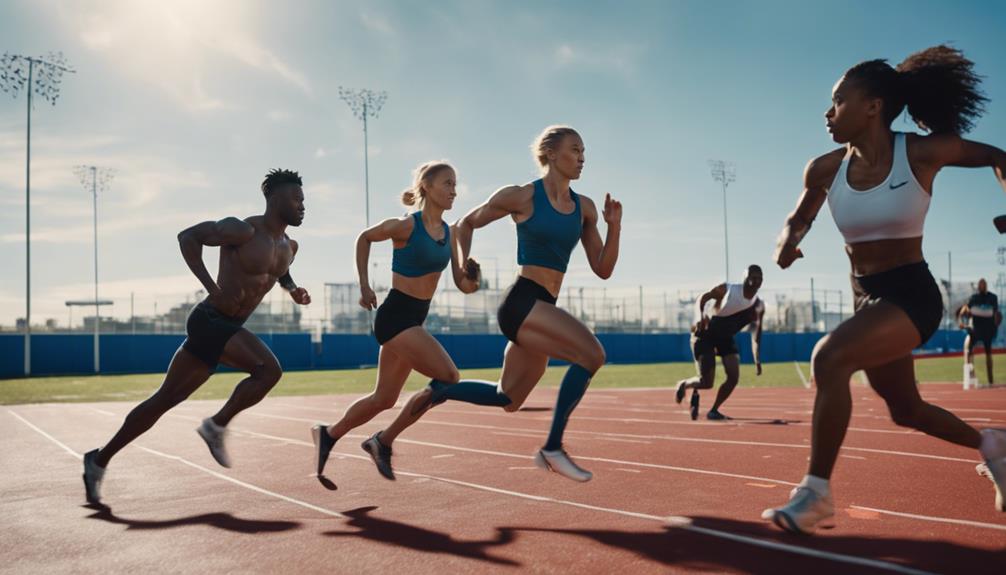Horse riding is often perceived as a leisurely pastime, but it is much more than just a recreational activity. In fact, horse riding offers a myriad of physical and psychological benefits that make it an excellent form of exercise. This article will explore the various dimensions of horse riding as an exercise, delving into its physical demands, cardiovascular benefits, and positive effects on mental health, among other aspects.
Understanding the Physical Demands of Horse Riding
Horse riding requires a unique blend of strength, flexibility, and endurance. As riders maintain their balance atop a moving animal, they engage various muscle groups, particularly in the core, legs, and back. The physical demands of riding can be quite high; maintaining an upright posture and controlling the horse requires numerous small muscle adjustments, which contribute to overall muscle engagement. This makes riding a dynamic workout that challenges the body in ways that are often unrecognized by those outside the equestrian world.how to exercise your dog when it’s too hot outside
Additionally, the level of exertion can vary significantly depending on the type of riding being practiced. For instance, disciplines like dressage may focus more on precision and subtle movements, while jumping and rodeo events demand explosive power and agility. Regardless of the style, the physicality involved in horse riding cannot be underestimated, making it an effective way to enhance overall fitness.
Cardiovascular Benefits: Riding as a Heart Workout
Engaging in horse riding can provide substantial cardiovascular benefits, often akin to more traditional forms of exercise. When riding at a trot or gallop, the rider experiences an increase in heart rate, which promotes cardiovascular conditioning. Studies indicate that riding can elevate heart rates significantly, especially during more intense riding sessions, thereby improving heart and lung function over time.
Moreover, the rhythmic motion of riding can help improve circulation, leading to better oxygen delivery throughout the body. This increased heart activity can contribute to lower resting heart rates and reduced risks of cardiovascular diseases. Therefore, horse riding not only serves as an enjoyable hobby but also functions as an effective cardiovascular workout that can lead to long-term heart health.
Strength Building: Core and Leg Muscles in Action
One of the most significant physical benefits of horse riding is its ability to build strength, particularly in the core and legs. Riders must engage their abdominal muscles to maintain balance and stability while navigating various terrains and maneuvers. This consistent engagement can lead to improved core strength, which is vital for overall physical health and prevents injuries in everyday activities.
The legs also play a crucial role in riding, as they are used for controlling and communicating with the horse. Riders continually work their quadriceps, hamstrings, and calves, which can result in toned and stronger leg muscles over time. This muscle engagement not only enhances riding performance but also contributes to overall lower body strength, making horse riding a multifaceted workout option.
Improving Balance and Coordination Through Riding
Horse riding uniquely challenges an individual’s balance and coordination. Riders must learn to adjust their body position in response to the horse’s movements, fostering a heightened sense of spatial awareness. This dynamic interaction enhances proprioception, which is crucial for maintaining balance in various physical activities beyond riding.
The coordination required to sync movements with the horse fosters improved neuromuscular connections. As riders become more adept at managing their body and the horse’s actions, they develop better overall coordination. This skill transfer can have positive implications in other sports and physical activities, making horse riding an effective way to enhance overall athletic performance.
Mental Health Advantages: Riding for Stress Relief
In addition to its physical benefits, horse riding has profound effects on mental well-being. The act of riding can serve as a form of therapy, allowing individuals to escape the stresses of daily life. Interacting with horses fosters a sense of calm and mindfulness, as riders must focus their attention on their mount and their environment, encouraging a meditative state.
Studies have shown that spending time with animals, particularly horses, can reduce levels of anxiety and depression. The bond formed between rider and horse can provide a unique sense of companionship and emotional support, contributing to improved mental health. Thus, horse riding emerges as a holistic approach to stress relief and emotional stability.
Social Interaction: Riding in Community and Group Settings
Horse riding also provides numerous opportunities for social interaction, which is essential for overall well-being. Riding in community settings, such as clubs or group lessons, allows individuals to connect with others who share similar interests. This social aspect fosters a sense of belonging and camaraderie, which is vital for emotional health.
Moreover, participating in equestrian events or competitions can enhance social interaction by forging friendships and collaborations among riders. These connections often extend beyond the riding arena, leading to a robust support network that can positively impact riders’ lives both on and off horseback. Socializing while engaging in a physically demanding activity like riding offers a dual benefit for mental and physical health.
Safety Considerations: Staying Fit While Riding
While horse riding is an enriching activity, it is essential to prioritize safety to ensure a positive experience. Wearing appropriate gear, such as helmets and boots, can significantly reduce the risk of injuries. Additionally, understanding the horse’s behavior and maintaining proper riding techniques can help prevent accidents, allowing riders to focus on enjoying the exercise safely.
Safety also extends to maintaining the physical fitness required for effective riding. Riders should engage in a balanced fitness regimen that complements their riding activities, such as stretching, strength training, and cardiovascular exercises. This holistic approach not only enhances riding performance but also reduces the risk of injuries, promoting a safer riding experience.
Conclusion: The Holistic Benefits of Horse Riding Exercise
Horse riding emerges as a multidimensional activity that offers a wealth of benefits, making it an excellent form of exercise. From enhancing physical fitness through strength and cardiovascular benefits to fostering mental well-being and encouraging social interaction, riding a horse provides a unique workout experience. As individuals explore the world of equestrianism, they can reap these diverse benefits while enjoying the profound connection that comes from working with such magnificent animals. Thus, horse riding is not just a pleasurable hobby but an exceptional pathway to holistic health and well-being.
In summary, horse riding serves as an engaging and effective form of exercise that addresses both physical and mental health needs. The combination of strength building, cardiovascular improvements, enhanced balance, and stress relief makes it a remarkable activity for individuals of all ages. Embracing horse riding can lead to a healthier lifestyle while fostering meaningful connections with both horses and fellow riders.


